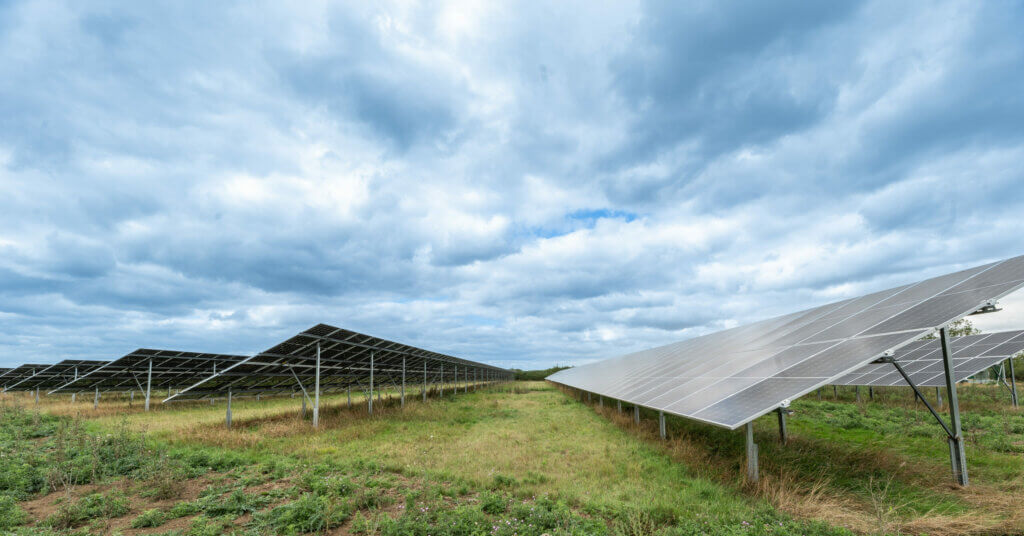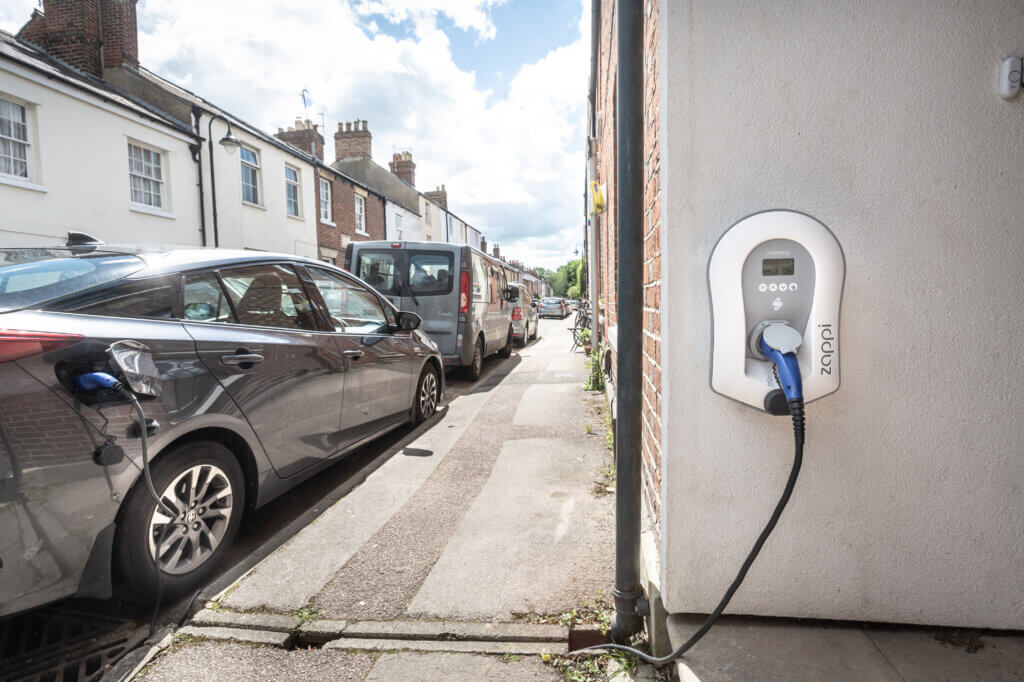community benefit and large-scale ground mount solar
To achieve our net zero goals, we need to prioritise a diverse mix of renewable energy sources to revolutionise our energy landscape.
Key components of this transition include a substantial increase in wind power capacity, both onshore and offshore. Additionally, solar energy will play a pivotal role, in the form on rooftop and large-scale ground mount solar PV. In addition, improvements in energy storage and advances in smart grid technologies will be essential to efficiently managing the intermittent nature of renewable sources.
As well as providing the clean, green electricity needed to power the transition to net zero, renewable technologies can offer other benefits to the communities that host them. In this blog, we focus on the large-scale ground mount solar projects and explore what good community benefit could look like in the context of these projects. A hint: it’s not all about the money!

What is community benefit?
Community benefits are a voluntary package of benefits (usually financial in nature) that renewable energy businesses provide to support communities in which they operate.
Large scale ground mount solar projects – like those proposed for Botley West – can offer a unique opportunity for communities to reap a range of social, economic, and environmental rewards.
Low Carbon Hub believe that any community benefit package related to such projects should not just focus on the amount of funding, but on how we can use it to work in partnership with the developer, landowner and local authorities to create lasting change that benefits everyone in the community.
To the end, we would expect to leverage the amount of funding offered so that it becomes the seed for a much bigger impact. This needs to therefore be properly managed and monitored to ensure its effectiveness.
What would good community benefit look like?
A well-managed funding pot could create significant impact by enabling:
- Support to help reduce energy demand, and therefore energy bills, for those least advantaged in the community.
- The creation of a landscape of nature recovery with a focus on at least 70% biodiversity net gain and that is open and accessible to all in the community.
- Creation of opportunities for young people to gain work experience, training and jobs in renewable energy and environmental management.
What would be a good amount of funding?
There is no standard amount of money currently set that renewable energy businesses should offer for community benefit. There are examples being suggested for other renewable energy projects in the UK such as:
- Local Energy Scotland suggest £5k/MW/year installed and index-linked for the life of the project. This is for wind farms, and they produce more energy per MW installed than solar does, so not a direct comparison. This would amount to approximately £4.2m/year.
- There is an 800MW proposal for a solar farm in Nottingham. The offer being discussed here is £1,200/MW/year. This would mean around £1m/year.
We think that whatever sum of money is agreed it must be index linked or otherwise linked to the revenues of the solar farm, so that it doesn’t lose value over time.
How is it managed?
Ideally the funding and resulting activities are governed by a combination of landowner, developer, local authorities and community members. This could take the form of a Board whose job would be to make sure that the agreed benefits were achieved over time.
A social enterprise structure would work well to ensure that the delivery of community benefit is the focus.
Community ownership
At the core of Low Carbon Hub lies the fundamental principle of community ownership. For large scale solar parks, this may not be easy because of the scale of the investment needed, but we still think there are opportunities to be explored that would allow members of the local community to have a financial stake in the project on their doorsteps.
Impact of a community benefit fund
A new social enterprise set up to deliver the community benefit aims could deliver a range of impact and activity, including:
- Producing Community Action Plans for Net Zero – detailing how communities could reach net zero. See our plan for Cuckoo Lane Primary Substation.
- Tackling fuel poverty – improving the quality of people’s homes to reduce their energy consumption and make them healthier and more comfortable to live in.
- Smarten up our houses – install solar PV, batteries and EV chargers to become ‘smart’ that would allow them to take part in new tariffs.
The more money given to community benefit the quicker action towards these goals would take place. People’s energy poor homes would be improved sooner, providing a critical mass of demand to enable the training of professionals and installers to do this work.


Buying the energy produced locally
People are increasingly interested in the idea of communities being able to buy directly the electricity produced locally. Traditionally there have been several barriers to being able to do this – mostly regulatory in nature.
One solution is to create a ‘Community Energy Services Company’ or CESCO. This framework could allow for people local to a solar farm to buy cheaper electricity from the CESCO who would have a ‘Power Purchase Agreement (PPA) in place with the developer. The developer would reserve a certain amount of its generation for a community PPA so that local communities could benefit from the solar park in their area.
The CESCO model also allows for the development of Smart Community Energy Schemes (SCES) where communities can work together to reduce their energy demand, to shift their demand to flatten the peaks of use (think morning breakfast and dinner time) and to share or trade energy they generate themselves. Doing this will benefit everyone who takes part by reducing their bills and potentially making extra money – and will also make sure that investment to upgrade the local distribution network is kept as low as possible.
You can read more about these ideas for community benefit in our recent response to the second stage consultation for Botley West, an 840MW solar park proposed to be built to the north and west of Oxford.
In conclusion, the benefits of large-scale ground mount solar PV could extend far beyond clean energy generation. When done with the community in mind early on in plans and proposals, there is potential to create real positive change, transform communities and create a more sustainable energy future.
